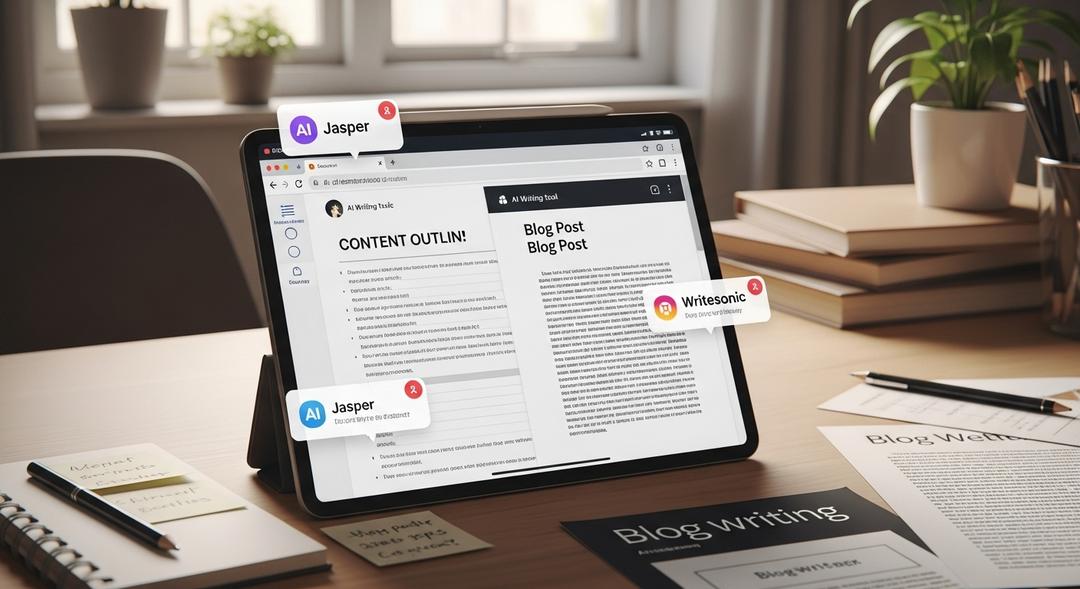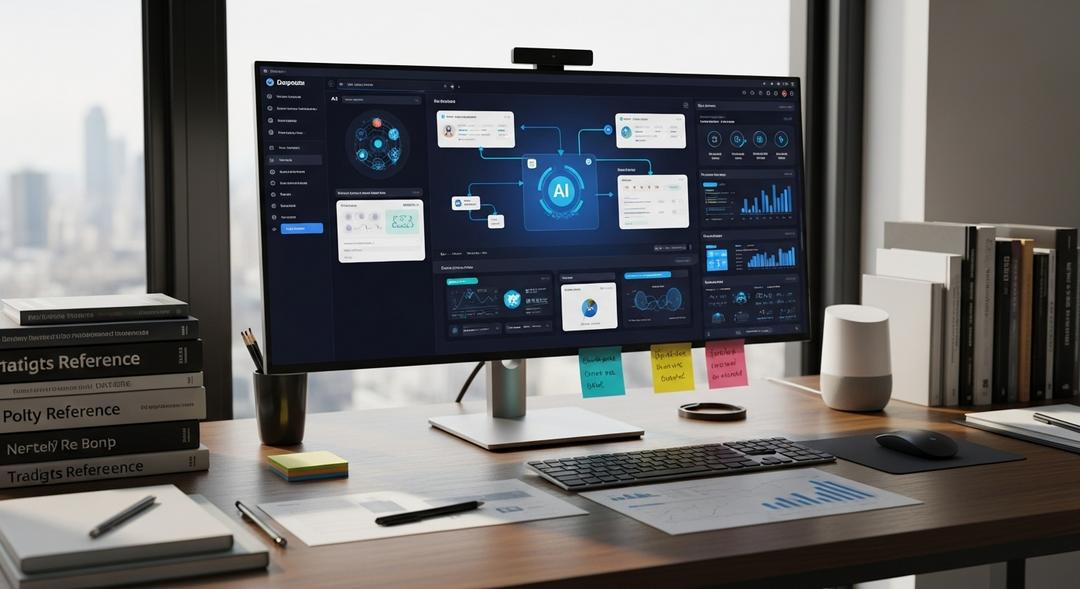In recent years, AI detection tools have become integral for those looking to ensure content authenticity and originality. These tools provide a reliable method for identifying potential plagiarism or AI-generated content, thereby enhancing trust and credibility. As technology continues to evolve, understanding the intricacies of AI research tools can benefit content creators, educators, and publishers alike by helping maintain integrity in their work.
With the expansion of the digital landscape, AI detection tools are increasingly relevant in academic and professional settings. They play a critical role in safeguarding intellectual property, enforcing originality standards, and providing verification layers across varied content. Let’s explore what these tools offer and examine their benefits.
What are AI Detection Tools?
AI detection tools are specialized software solutions crafted to analyze text for signs of AI-generated content or potential plagiarism. By using complex algorithms, these tools can meticulously examine and pinpoint patterns that suggest content may not be original. They are indispensable in maintaining content uniqueness for academic projects, content creation, or corporate communications.
Benefits of Using AI Detection Tools
Implementing AI detection tools comes with several advantages, making the content quality assurance process more efficient while protecting intellectual properties.
- Enhances content originality by identifying AI-generated text and plagiarism.
- Boosts the reliability of academic research and publications.
- Saves time and effort in manual content verification processes.
1. Originality.ai
Originality.ai is a comprehensive tool dedicated to detecting AI-generated content and validating textual authenticity. It’s a popular choice for content creators aiming to ensure originality and avoid plagiarism.
Features
- Advanced detection algorithms
- Seamless content platform integration
- User-friendly interface with detailed reporting
- Dedicated plagiarism checks
Pros
- Highly accurate results
- Supports various content types
- Rapid processing and feedback
- Cost-effective for all scales of operation
Cons
- Limited features available in the free version
- Full features require a subscription
The pricing structure is designed to be competitive for individual and business users with scalable options.
2. GPTZero
GPTZero is engineered to detect whether text is AI-generated, especially valuable for educators and businesses that monitor text originality.
Features
- Detection of major language models
- Real-time text analysis
- Support for multiple languages
- Customizable detection settings
Pros
- Effective in educational contexts
- Detailed insights and analytics
- Regular updates and improvements
Cons
- May require some learning for new users
- Subscription is needed for advanced features
Pricing plans cater to both personal and institutional licenses.
3. ZeroGPT
ZeroGPT specializes in identifying AI-generated text, offering extensive scanning capabilities for diverse content types.
Features
- AI-created text detection
- High precision and accuracy
- Integrated plagiarism checks
- Robust reporting tools
Pros
- Accurate and reliable results
- Quick and easy to use
- Suitable for diverse content
Cons
- May be less intuitive for newcomers
- Limited free usage
ZeroGPT offers flexible pricing tailored for various usage scales.
4. Writer.com AI Content Detector
The Writer.com AI Content Detector aims to ensure the originality of online content with a strong focus on precision.
Features
- Intuitive interface
- Comprehensive AI detection capabilities
- Integration with writing tools
- Detailed reporting and analytics
Pros
- High accuracy levels
- Seamless tool integration
- Ideal for content marketers
- Continuous enhancements
Cons
- Subscription necessary for full access
- Occasional system lag during high traffic
Offers subscription-based pricing for individuals and teams.
5. Turnitin AI Checker
Turnitin is well-known for its efficacy in academic environments, offering sophisticated tools for plagiarism detection.
Features
- Comprehensive similarity checks
- AI text recognition
- Detailed originality reports
- Wide database integration
Pros
- Extensive educational reach
- Trusted by educational institutions
- Regular updates to features
Cons
- Higher cost for premium features
- Primarily focused on education
Pricing is determined by institutional usage and requirements.
6. CrossPlag
CrossPlag offers a global solution for plagiarism detection, useful in maintaining content originality across diverse platforms.
Features
- Global plagiarism checks
- Multi-language support
- Efficient scanning capabilities
- User-friendly interface
Pros
- Cross-platform compatibility
- Accurate international checks
- Consistent updates
Cons
- Limited functionality in the free version
- Subscription required for enhanced features
CrossPlag offers a tiered pricing plan suitable for different usage needs.
7. Copyscape
Copyscape is a recognized name in content verification, focusing on detecting duplicates to ensure content remains unique.
Features
- Duplicate content detection
- Batch search capabilities
- Comprehensive indexing
- API access for developers
Pros
- Highly efficient and precise
- Well-established reputation
- Affordable pricing options
Cons
- Lacks some modern detection features
- Primarily focuses on plagiarism
Copyscape offers competitive pricing and Pay-As-You-Go options.
8. Hive AI Moderator
Hive AI Moderator provides tools to automatically detect and filter AI-generated content, ideal for digital content moderation.
Features
- Real-time moderation capabilities
- AI content filtering
- Customizable moderation settings
- Wide content compatibility
Pros
- High-speed processing
- Effective for large operations
- Regular feature updates
Cons
- Technical expertise may be required for setup
- Limited focus on moderation
Hive AI Moderator provides flexible pricing tailored to organizational needs.
9. Winston AI
Winston AI delivers detailed analysis of AI-generated text, providing precise detection to ensure content originality.
Features
- AI-generated text detection
- Multi-format content analysis
- Intuitive dashboard for findings
- Regular updates to detection models
Pros
- Detailed and thorough analysis
- Wide application range
- Simple and effective interface
Cons
- May involve a learning curve
- Costs associated with advanced features
Winston AI offers pricing tiers suitable for personal to enterprise use.
10. Leap AI
Leap AI focuses on streamlining content detection to ensure text originality and fidelity across various industries.
Features
- Robust content detection
- User-friendly interface
- Seamless integration into existing systems
- Customizable settings for specific needs
Pros
- Fast and efficient
- User-friendly
- Industry-agnostic applicability
Cons
- Some features may need additional cost
- Limited free-tier capabilities
Leap AI provides scalable pricing models to fit different user requirements.
Conclusion
AI detection tools are vital assets in the modern digital world, offering the capability to uphold originality and accuracy in work. From educational institutions to businesses, they are instrumental in identifying potential risks and maintaining the integrity of original content.
While each tool comes with unique features and advantages, choosing the right AI resources tools depends on specific needs and the intended scope of use. As technology progresses, these tools will continue to be indispensable in ensuring content authenticity and promoting ethical content creation practices.








